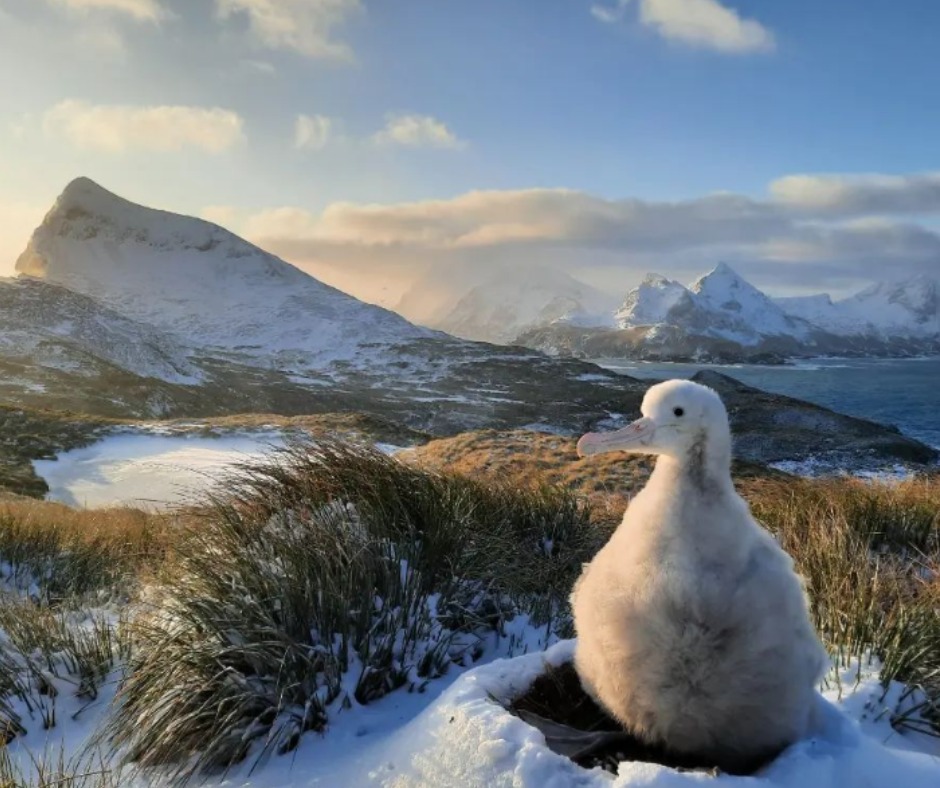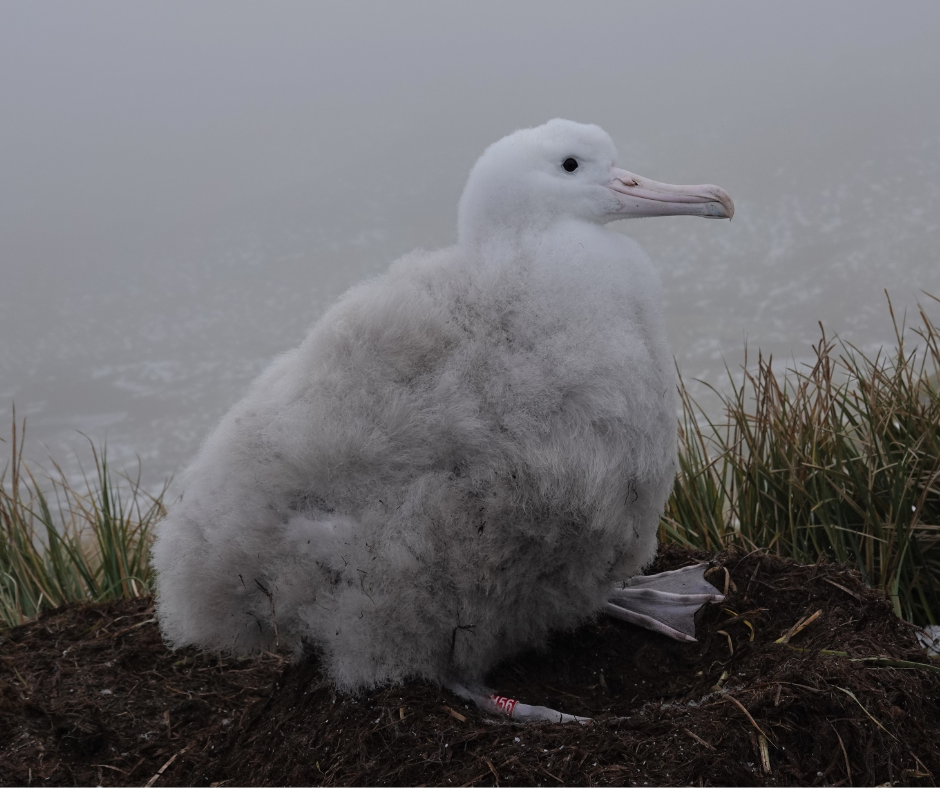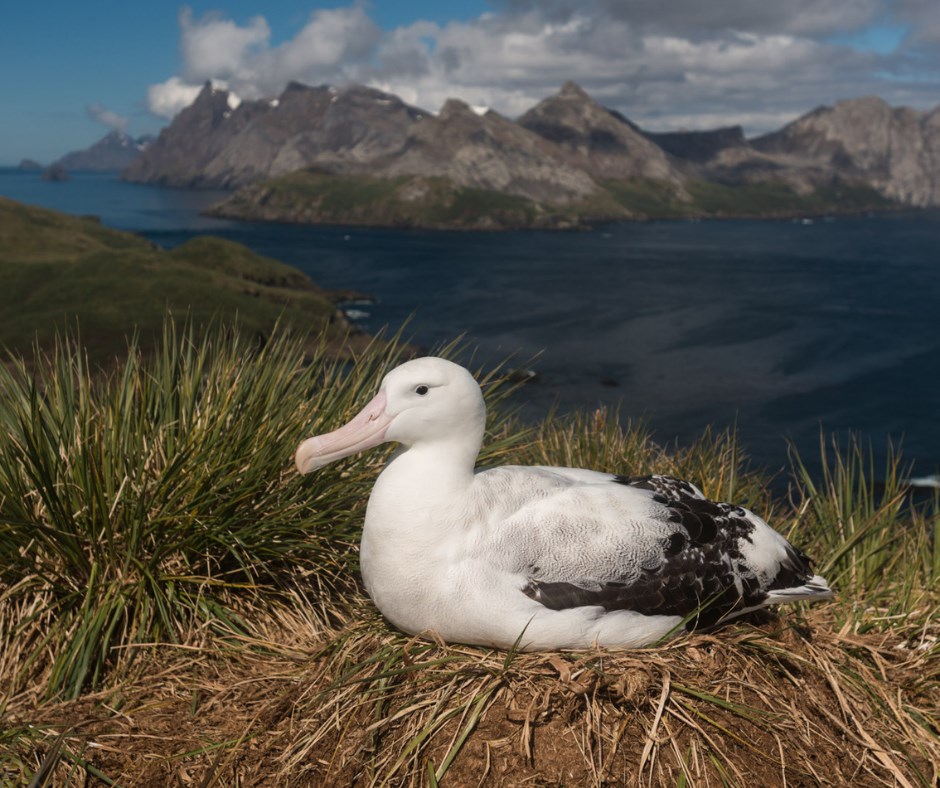
A Wandering Albatross chick on Bird Island during the austral winter; photograph by Erin Taylor
For many decades, researchers from the UK’s British Antarctic Survey (BAS) have studied the seabirds of Bird Island, South Georgia (Islas Georgias del Sur)* in the South Atlantic. Perhaps foremost, and certainly the longest uninterrupted study, has been the annual monitoring of changes in the breeding population of the globally Vulnerable Wandering Albatross Diomedea exulans. All breeding adults and chicks on the island are banded, so as well as population size, annual monitoring of survival, breeding frequency, breeding success, age at first return and age at recruitment are able to be recorded.
Richard Phillips, Higher Predators and Conservation Group, British Antarctic Survey, has written to ACAP Latest News on the current season’s work with the island’s Wanderers: “An estimated 656 pairs of Wandering Albatrosses nested on Bird Island this year. Although this is the lowest ever recorded, the population has been largely stable since 2017. This follows decades of population declines, such that in recent years just over a third as many birds bred as in the early 1960s.” He further reports that 527 chicks were alive on 1 April, giving a hatching success of 80.3%.

A 2021/22 Wandering Albatross chick in the study area receives its colour band “red H56”; photograph by Erin Taylor
News also comes on the current breeding season from BAS Zoological Field Assistant on the island, Erin Taylor, via the Albatross Task Force Facebook page. She writes: “The chick census results are in for July. The team on Bird Island counted 504 Wandering Albatross chicks, which sadly means that we have lost three chicks in the past month. Hurricane level winds have been hitting the island and are likely to have been the cause of death. Extreme weather like this is a consequence of climate change and is expected to increase in frequency, so it is important that we maintain an understanding of the population on Bird Island.”
At the most recent census, all 504 chicks were metal banded, with the 73 in the intensive study area also receiving a red alphanumeric colour band.

A Wandering Albatross sits tight on its nest in summer on Bird Island; photograph by Richard Phillips
The Wandering Albatrosses breeding on South Georgia (Islas Georgias del Sur)* have been identified as forming an ACAP Priority Population for conservation because of their global importance and steep rate of decline.
With thanks to Richard Phillips and Erin Taylor.
John Cooper, ACAP Information Officer, 22 September 2022
*A dispute exists between the Governments of Argentina and the United Kingdom of Great Britain and Northern Ireland concerning sovereignty over the Falkland Islands (Islas Malvinas), South Georgia and the South Sandwich Islands (Islas Georgias del Sur y Islas Sandwich del Sur) and the surrounding maritime areas.

 English
English  Français
Français  Español
Español